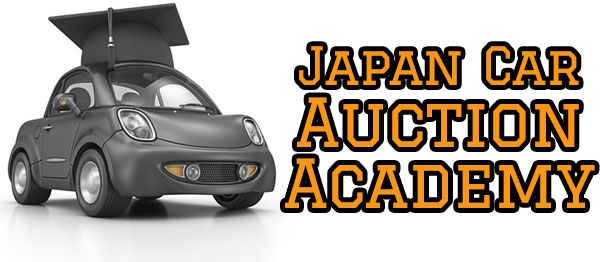
"Original" Parts or Equipment
These parts are fitted by the manufacturer as factory-standard items, or by the official dealer before the car was sold new.
In the translation of the auction sheet, you will see such parts described as “original” -- for example like this: “original CD stereo”.
Original equipment is also noted in our online system in the “Options” section. You may see equipment referred to using the following abbreviations:
- AC = air conditioning
- AB = air bags
- PS = power steering
- PW = power windows
- Navi = navigation system
- AW = alloy wheels
- SR = sunroof
- Leather = leather seats
- TV = television
- WAC = dual (front and rear) AC
- AAC = climate control
- WAAC = dual (front and rear) climate control
It's up to the seller to decide what equipment to list, so just because it isn't mentioned does not mean the car doesn't have it. If you really need to know, we can usually contact the manufacturer and find out directly.
Dealer Option Parts
These are not technically “original” parts, since they were not fitted in the factory. However, equipment described as a “dealer option” in the translation was fitted by the official dealer.
In reality, this makes the difference between these parts and “original” parts negligible, and these “dealer option” parts will usually have the manufacturer’s name on them anyway.
Aftermarket (AM) Parts
If the translation of the car’s auction inspector’s report describes a part as being “AM” (aftermarket), it means that this part was not made by the manufacturer of the car, but was bought and fitted separately. It is pretty common to see cars fitted with “AM AWs” (aftermarket alloy wheels), but with more sporty, customized models you can sometimes find lengthy lists of aftermarket parts, from air cleaners to turbos to suspension. The only problem is that it can be hard to read these details when the seller crams them all into a small space on the auction report.
“-Type” and “-Style” Parts
The car auction inspector or seller will use the suffixes “-type” or “-style” to refer to parts which look to be those of a particular manufacturer or model, although this is not completely clear.
So, for a number of Porsche 911s you will see “Cup-type wheels” in the translation, and what this means is that the wheels on the car look to be the same design as those on the “Cup” car, but the inspector cannot be sure that these ones are actual original “Cup” wheels.
Similarly, you will often see Mercedes with “AMG-style” parts. This means that there are parts that look very much like AMG parts, but the auction inspector is not completely sure that they really are genuine AMG parts.
“-Spec” Parts
When the part name has the suffix “-spec” added, this means that the part concerned is an original manufacturer part, but that it is not meant for this model to which it is fitted. For example, you may see a Mercedes 300E which has “500E-spec” wheels. That is to say, someone has fitted factory wheels intended for a 500E onto this 300E model.
A variant of this is when parts from a car from one model year (usually a younger one) are fitted to a car from another one. So you may be looking at a 2005 BMW 7 Series and see a comment which says, “2007 model year tail lights.”In other words, the style of taillights which were designed later and fitted to 2007 cars have been retrofitted to this 2005 model to make it look newer than it really is.
Non-Standard Parts
On rare occasions, you will see parts described as “non-standard.”
What this means is that the car auction inspector is sure that these are not original factory-fitted items or dealer option equipment, but he is not sure whether they are actually aftermarket parts (made by another company) or whether they are parts made by the same car manufacturer but that are not normally fitted to this model.
AM Parts from a Specific Maker
Where a part has been designated simply “AM”, it just means that the inspector or seller knows that the part is an aftermarket item, but he doesn't know who the manufacturer of this part is. However, if the maker of the part is known, the inspector or seller will usually mention this in the auction report.
So, “AM suspension” just means that there are aftermarket suspension parts fitted from an unknown maker, whereas “Bilstein shock absorbers” is much more specific about which parts and who made them.
Aftermarket parts makers appearing regularly in translations are:
- HKS
- Nismo
- Brabus
- AMG
- Lorinser
- TRD
- Bilstein

We find that the most successful importers really understand how it all works - from the auction to the ship and beyond. Don't get left behind!


